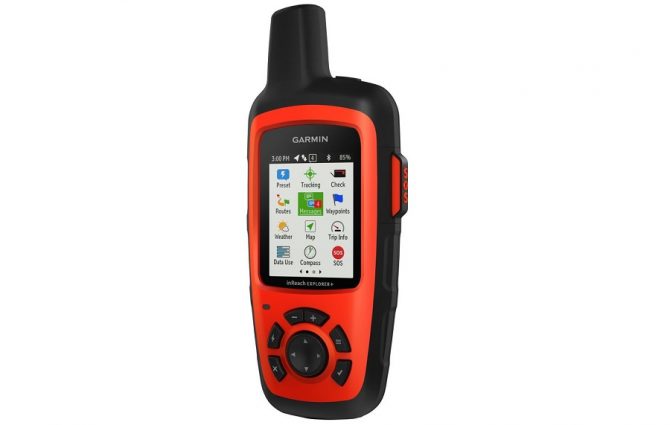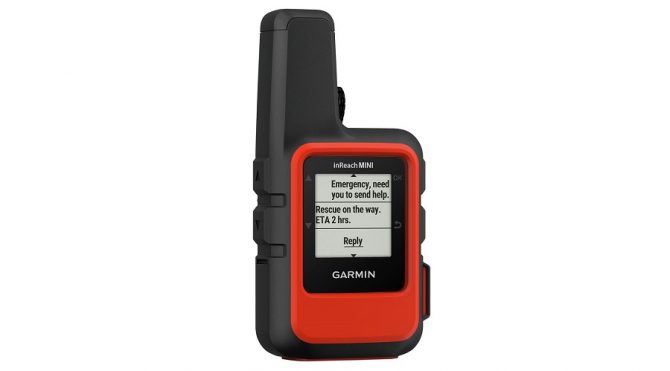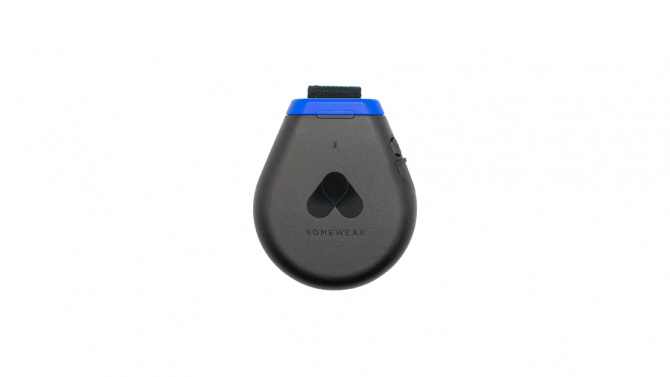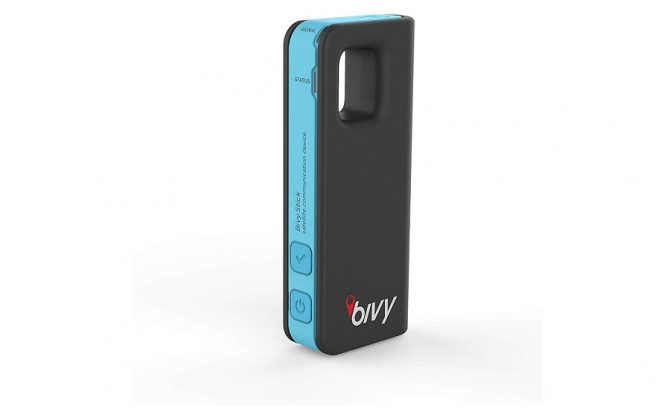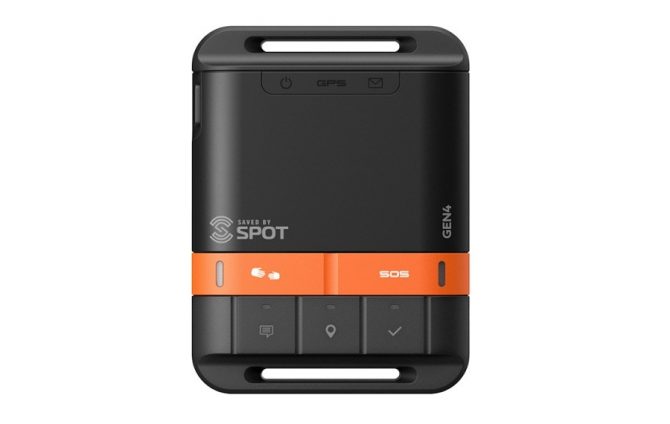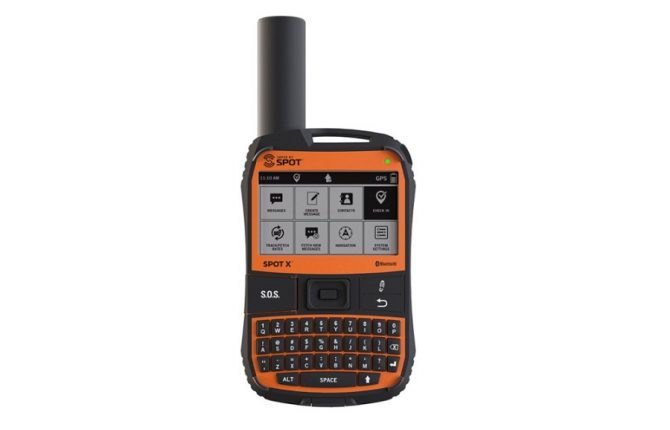
Desolation Wilderness, South Lake Tahoe, CA. You don’t need to go to Alaska to get far enough off the grid to want a satellite communicator. Photo: Eric Ward//Unsplash
There are few worse situations I could imagine then being lost or injured in the backcountry and unable to call for help. These days, that’s a pretty remote concern with a cellphone in my pocket that I use for basically everything. However, there are situations when your phone goes dead, you’re out of cell service and if things go pear shaped, you’ll be, as they say, up an arctic creek without a paddle. If you’re an outdoorsy person, or spend a significant amount of time off the grid, the chances of something like that happening go way up. So why not just carry around a paddle, a.k.a. a satellite communicator, with you at all times? Also called a satellite messenger, these GPS-enabled devices have basically replaced satellite phones, probably because nobody talks on the phone anymore anyways. With a satellite communicator, not only can you call for professional help via S.O.S., but you can also keep your friends and family updated on your whereabouts.
However, high tech functionality comes with a high price tag, so you can’t just jump at the first option you see on the internet. And not only is there the upfront cost, but like a regular cell phone, there are subscription fees or pay as you go costs, as well as other factors to consider such as which global network your device will be running and how much it relies on a bluetooth connection to a smartphone. But don’t worry. We’ve selected a few of the best options for you, and even tried a couple ourselves.
What are the Best Satellite Communicators?
1. Garmin InReach Explorer+ ($450)
2. Garmin InReach Mini ($350)
3. Somewear Global Hotspot ($280)
4. Bivy Stick Blue ($350)
5. SPOT Gen 4 ($150)
6. SPOT X ($250)
Which Satellite Network is Best?
There are two options for satellite communicators – Iridium and Globalstar. Iridium boasts 100 percent planetary coverage with 66 Low Earth Orbit satellites, compared to Globalstar’s 48 LEO satellites and some ground stations that do miss a few very remote spots around the globe. However, Globalstar can be a faster network with 9.6kbps potential data speeds compared to Iridium’s 2.4kbps. Garmin, Somewear and Bivvy all use Iridium, whereas SPOT devices use Globalstar.
Phone or no Phone?
Satellite communicators all have the capability to connect to your smartphone via Bluetooth or Wi-Fi for increased capability and ease of use through an app. Some communicators rely on a smartphone connection for most of their functionality such as custom messaging, tracking, and navigation, meaning you will need to keep your phone charged if you want to make use of those features, definitely a drawback if you plan on going into cold environments (notoriously deadly for phone battery life), or are planning a long backpack or ultralight trip and don’t want to lug around a solar panel or portable charger. That being said, any phone app will be infinitely easier and quicker to use than the buttons on any satellite communicator (except maybe the SPOT X).
What Functions do I Want in a Satellite Communicator?
The biggest one is the S.O.S. functionality, allowing you to get help at the touch of a button. All the options below have this, and most importantly, have this feature integrated into the device itself rather than relying on a cell phone connection. Messaging is another must, allowing you to communicate non-urgent messages to friends and family over text, and all of these devices (except the minimalist SPOT Gen 4) boast two-way messaging to allow your loved ones to respond as well. Tracking is another great feature, allowing you to share a link with others to follow your progress in real time. Navigation often goes hand in hand with tracking, letting you figure out where you are going as well as communicating where you are.
1. Garmin InReach Explorer+ ($450)
Standalone: Yes
Subscription Cost (monthly): $11.99 and up
Activation Fee: Yes
The king of sat-comms, with a price to match, the Explorer+ does it all in style. I have an Explorer+ and am thoroughly satisfied with the device. However, it is almost a bit too much for my purposes – I mainly use it as a safety net for skiing solo should I injure myself away from cell service, I can push the S.O.S. and get help. With that as the only function in mind, I could do with a much less complicated system, but the ability to keep my loved ones up to date is crucial, and my mom loves the tracking feature. For the longer backcountry ski or backpacking trips that I always tell myself I need to do more of, the navigation function does come in handy, as well as the air pressure-based altimeter and accelerometer with integrated topographical maps. I like that it doesn’t rely on a cell phone connection for anything but easier typing. The battery life is killer and damn near impervious to cold. It’s a bit bulky for a pocket, but just throw it in a bag and you’ll forget it’s even there (until you’re really glad that it is there).
CHECK PRICE ON BACKCOUNTRY CHECK PRICE ON AMAZON
2. InReach Mini ($350)
Standalone: Yes
Subscription Cost (monthly): $11.99 and up
Activation Fee: Yes
The InReach Mini is the lightweight version of the Explorer+ above, retaining much of the same functionality. Like its big brother, for the most part it doesn’t need to be connected to your phone, but typing can be difficult without one, and for more advanced mapping and navigation it does rely on a cell phone due to the small and limited screen. That being said, at half the weight (3.5oz compared to 7.5oz), and $100 dollars cheaper, the InReach Mini does everything you need it to do, and is a bestseller in the category for a reason.
CHECK PRICE ON AMAZON3. Somewear Global Hotspot ($280)
Standalone: No
Subscription Cost (monthly): $8.99 and up
Activation Fee: Yes
This is another device that I’ve had the chance to try out, and I’ve loved the ease of use and thoughtful design. The Somewear Global Hotspot has the lowest annual subscription price at $108, but that’s not where the plusses stop. Extremely lightweight and with a long battery life, the Somewear is easily the most user-friendly option of the bunch with a well-designed app that lets you send and receive texts, emails, and even check the weather. A thoughtful feature is the bungee loop on the back that lets you hitch the device to the outside of a pack for better connection (cloth and heavy backpack material can impede the satellite connection on any communicator) without having it bounce around on a carabiner like most other options. The one drawback is its reliance on a phone connection, but the essential S.O.S. feature is available on the device itself, as well as the ability to start/stop tracking.
CHECK PRICE ON somewearlabs4. Bivy Stick Blue ($350)
Standalone: No
Subscription Cost: Pay as you go.
Activation Fee: No
This lightweight option is great for the occasional user. The Bivy Stick Blue has messaging, S.O.S., location sharing and tracking, is lightweight and has a long battery life in an easy-to-use package. Like the Somewear device, it relies heavily on a bluetooth connection to your smartphone, but it does allow for some pre-written messages to be sent from the device itself, as well as activating the S.O.S.. The biggest selling point of the Bivy Stick is its pay-as-you-go data plans, which allows a user to pay for credits rather than committing to an annual or monthly plan. An interesting feature to note with the Bivy Stick is that it has its own cell phone number.
CHECK PRICE ON REI CHECK PRICE ON AMAZON5. SPOT Gen 4 ($150)
Standalone: Yes
Subscription Cost (monthly): $11.95 and up.
Activation Fee: Yes
The SPOT Gen 4 is a great minimalist option. This communicator does not connect to a smartphone, and only has S.O.S. and pre-programmed messaging functionality, allowing you to keep your loved ones up to date, call for help if needed, and nothing else. Unless you’re in need of some backcountry navigation you really don’t need anything more than what the SPOT Gen 4 provides, making it a great option for people who are actually looking for peace and quiet when they go off the grid.
CHECK PRICE ON BACKCOUNTRY CHECK PRICE ON AMAZON
6. SPOT X ($250)
Standalone: Yes
Subscription Cost (monthly): $11.95 and up
Activation Fee: Yes
The SPOT X is an interesting device. Like the SPOT Gen 4, it is highly smartphone-independent, but it comes with far more functionality than the Gen 4, and can connect to a phone via Bluetooth if need be. A full QWERTY keyboard allows you to type out full messages without resorting to the smartphone, and gives you a taste of Blackberry-era nostalgia. With a satellite powered altimeter (less accurate than Garmin’s pressure-based system), and Globalstar satellite coverage, it’s basically a cheaper and slightly less-capable version of Garmin’s InReach Explorer+, and it weighs about the same too. As far as bang for your buck goes, this system is hard to beat.

